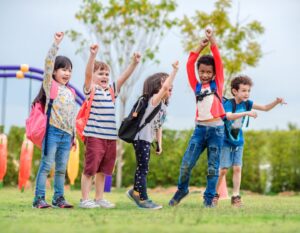
Crush that sugar!
Annually, worldwide, 14 November is marked as World Diabetes Day. This global awareness campaign is led by the International Diabetes Federation (IDF) and focuses on a specific theme related to diabetes every year. The theme for 2018-2020 revolves around Family and Diabetes, i.e., basically encouraging family members to get involved in diabetes prevention and management of their near and dear ones. It’s a good time for all of us to learn some basic truths about diabetes.
Read more: Childhood Obesity: How To Help Your Child Eat Healthily
What is it?
Diabetes is a metabolic disorder in which the level of blood sugar (glucose) is high. The hormone insulin secreted by the pancreas breaks down the sugar consumed in food. A drop in the production and/or utilisation of insulin leads to diabetes. Diabetes can be easily managed with a disciplined lifestyle but, if left untreated, it can also lead to life-threatening consequences. It is essential for all of us to test our blood sugar levels, especially if any family members have diabetes or if they are overweight, irrespective of age. For the uninitiated, to rule out diabetes the gold standard test is called the Oral Glucose Tolerance Test (OGTT).
How can it be detected?
The oral glucose tolerance test helps to pick up the early stages of the disease. This test involves testing of fasting plasma glucose (FPG) and two-hour plasma glucose (2hr-PG) after an intake of 75 grams of glucose dissolved in water. The American Diabetes Association (ADA) explains clearly what the diagnostic cut-offs are for diabetes and the prediabetes stages here. Your test will reveal if you have diabetes or pre-diabetes with Impaired Fasting Glucose (IFG) or Impaired Glucose Tolerance (IGT) respectively. Millions of people worldwide are unaware that they may have prediabetes. It is a condition in which the blood glucose levels are higher than normal but not high enough for a diagnosis of diabetes. A proper diet and exercise routine can help prevent prediabetes progressing to diabetes.
Read more: Healthy Meal Plans For Sassy Mamas In Hong Kong

What are the different types of diabetes?
There are different types of diabetes but the three most common forms are:
- Type 1 diabetes is when the body stops producing insulin. This generally happens in children and young adults and is not hereditary or congenital. Instead, it occurs suddenly – often due to an autoimmune reaction to some infection in the body. Due to the lack of insulin produced, insulin therapy is vital for survival and maintenance of good health.
- Type 2 diabetes is the more common form, accounting for about 80-90% of cases. In this form of diabetes, the pancreas either produces insufficient amounts of insulin, or the body is unable to use the available insulin properly. It is treated typically with a balanced diet, physical activity, oral medication and overall lifestyle modification. Type 2 diabetes can be prevented or delayed by reducing the risk factors that may lead to its development.
- Some women develop diabetes during pregnancy. This is called Gestational diabetes. In most of the cases, gestational diabetes reverts to normal after pregnancy but it increases the risk of type 2 diabetes in future.
Read more: Living With Type 1 Diabetes: A Mama’s Story Of Her Pregnancy

What are these risk factors?
There are many factors that increase the risk of developing type 2 diabetes. Some of which are given below:
- Family history
- Age above 40 years
- Race
- Being overweight or obese, as excess fatty tissue makes the body cells more resistant to insulin
- Inadequate physical activity
- Unhealthy diet
- Having high blood pressure or a high lipid level
- Those who have IFG or IGT are at maximum risk of developing diabetes later in life. Such individuals must undergo a GTT at least once a year and should follow a healthy diet and exercise programme in order to prevent diabetes.
It is important to remember that diabetes does not always produce symptoms until the disorder is fairly advanced. If you have a few of the following symptoms, please visit a medical practitioner:
- Getting tired easily for no apparent reason
- Passing urine more frequently than before
- Frequent hunger spans
- Unexplained weight loss
- Excessive thirst
- Delayed wound healing and frequent infections of the skin, bladder or gums, and itching in the genital area
- Numbness or tingling sensation in the hands and feet
- High blood sugar levels can cause the eye lens to swell and vision may become blurred or foggy
However, the symptoms of type 1 diabetes are more sudden and severe. Children with diabetes complain of tiredness, weakness and may sometimes exhibit irritable behaviour.
Read more: Winter Camps 2019: How To Keep Your Kids Busy This Christmas

Medical management and further testing
Diabetes can lead to a range of complications and therefore, it is important that anyone with diabetes does the five following tests:
- Fasting Plasma Glucose/Post Prandial Plasma Glucose (PPG): This involves taking a fasting sample after an 8 to 10-hour fast and a PPG sample 1.5-hours post-breakfast. Both these should be done together (preferably monthly) to check blood glucose control and the effect of medication.
- Glycosylated haemoglobin (a three-month average control of blood sugars): This must be checked on a quarterly basis, as it is the gold standard to test diabetes control. An HbA1c value of less than 7 % indicates good blood glucose control during the previous months.
- Lipid Profile: This looks at your cholesterol values and tells you how your diabetes is affecting your cholesterol values and indirectly your heart. This needs to be checked every 3 to 6 months.
- Microalbuminuria: This checks the kidney function in patients with diabetes and needs to be checked every six months as Nephropathy, which is a microvascular complication of diabetes, is quite common among patients with fluctuating glucose levels.
- Retina check-up: Annual retinal check-ups are mandatory for patients with diabetes as fluctuating blood sugars affect the retina.
Read more: Women’s Health: Critical Checks For Your 30s, 40s And 50s
How can we prevent diabetes?
Consistent efforts by all of us can prevent this disease from spreading. Here are some of the changes we can implement for ourselves, at our homes, workplaces and other communities that we are a part of.
At an individual level, we should:
- Maintain a healthy body weight
- Try to be physically active – at least 30 minutes of regular, moderate-intensity activity on most days for adults and 60 minutes per day for children
- Eat a healthy diet with at least three and five servings of fruit and vegetables a day
- Avoid excessive smoking and drinking
- Manage stress by yoga/meditation or practising a hobby
At a community level, we should:
- Try to create a culture of physical activity and use public parks, playgrounds and fitness facilities available
- Create awareness about diabetes, its complications and prevention
- Advocate for physical activity and healthy diets in educational institutions and workplaces
At a private sector level, we should:
- Make sure that nutritious choices are available at affordable prices for all consumers
- Cut down the sugar, salt and fat content of processed food
- Encourage regular physical activity in the workplace
At whichever level we choose to act, the time is now!
Read more: Creative Lunchbox Recipes From One Wholesome Meal
 View All
View All










 View All
View All




 View All
View All


 View All
View All











